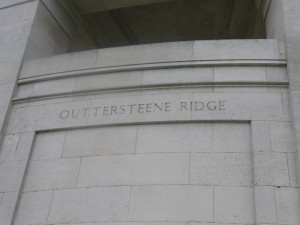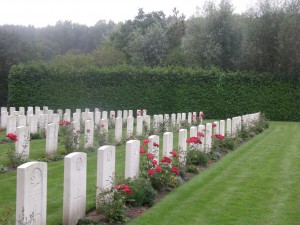Frank Morton
Name: Frank Morton
1894 - 13th April 1918
Place of Birth: Frodsham, Cheshire
Occupation: Labourer Glass Works
Division: 16th Battalion
Regiment: King's Royal Rifle Corps
Rank: Rifleman
Commemorated: Panel 8, Ploegsteert Memorial, Comines-Warneton, Hainau, Belgium
Person(s) placing the cross on behalf of the Arlesey Remembers You Project: Sandra & Jamie Sarll
Frank was born in Frodsham, Cheshire in March 1894, the son of George and Eliza Morton. George was employed as a locomotive driver in a brickyard. The family lived on the High Street in Arlesey and in 1911 Franks was working as a labourer in a glass factory.
Frank joined the King’s Royal Rifle Corps in January 1916 whilst he was employed by Messrs Cook & Son in St Paul’s Church Yard, London. Cook & Son were one of the largest English wholesale clothing traders and drapers of the late 19th and early 20th centuries. Frank was drafted to France in July 1916 and in November 1916, his parents received a letter from the War Office informing them Frank had been admitted to the General Hospital, Manchester suffering from dysentery. When he had recovered, Frank returned to the front. Frank’s brother George was wounded at the Battle of Arras in May 1917, resulting in the amputation of his right arm. A year later, on May 6th 1918, George and Eliza received a letter from the War Office, informing them that Frank had been killed in action on April 13th. The letter was a huge blow to them as they had just received a letter from Frank on April 9th saying he was quite all right. Frank had been back on the frontline only a month after he’d been home on leave. Whilst in the Rifle Corps, Frank had been in the Battle of the Somme, Delville Wood and Beaumont Hamel, and had been through the offensive in 1917 at Passchendaele and Messines.
George and Eliza received a letter on 17th December 1918 which read “British Red Cross and Order of St John 16 K.R.R.C. Dear Sir, we know how anxious you are to hear some details about your son, and we enclose for you to see the only report which we have received. We trust it may be of some comfort to you in your great sorrow to know that he killed outright and spared all suffering. Our Grave Department will try and find out where he was buried, and will send you a photograph of the grave if they are able to obtain one. Please accept our sincere sympathy in your sad loss. Yours faithfully, for the Earl of Lucan”.
The report read as follows “I knew him and he was 5ft 9 in., fair and clean shaven, age 27 or 28. On April 13th 1918 we were holding the line at Neuve Eglise, and the firing was heavy by machine guns and rifles, and I saw him sniped through the head and killed instantly. He was just 50 yards away and he was killed on the Ridge, and we had to retire for the Germans were close to us, and soon would be over the ground on which he lay. He would be buried by them. Inf Rifleman W Rob--- No 203162 K.R.R.C Oct 29th.
Frank is remembered with honour at Ploegsteert Memorial, along with more than 11,000 servicemen of the United Kingdome and South African forces who died in this area and have no known grave. Most died in the course of day-to-day trench warfare which characterised this part of the frontline.








